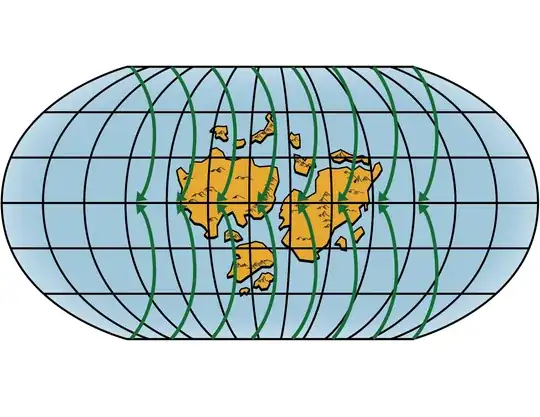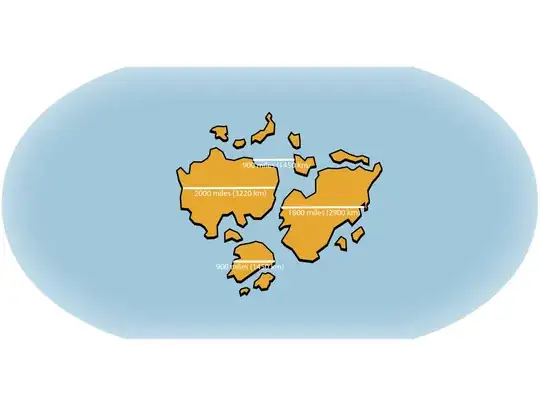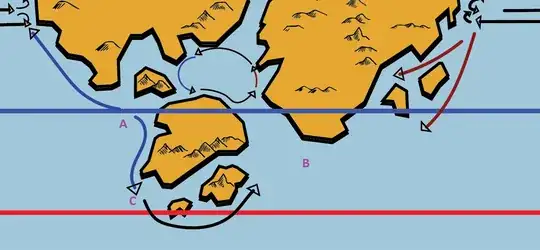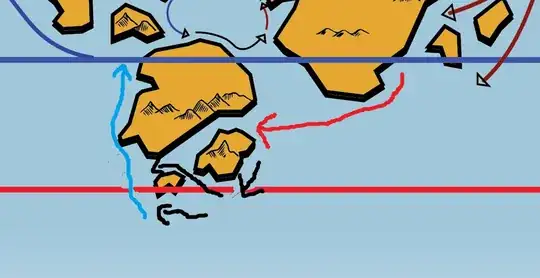Ocean Current Map:
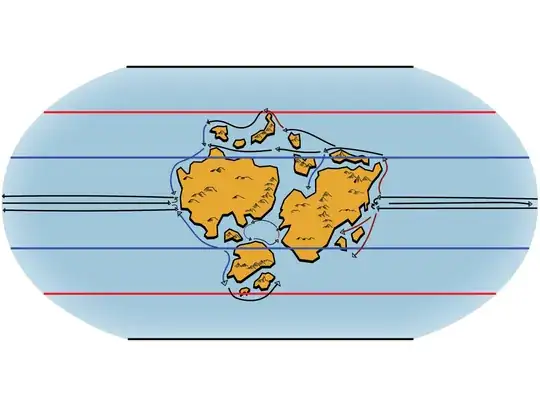 The straight red lines are 60* North and South, and the straight blue lines are 30* North and South. The curved blue lines with an arrow represent cold currents, while the curved red lines are hot currents. Black curves are neutral, with no sigificant heat exchange.
The straight red lines are 60* North and South, and the straight blue lines are 30* North and South. The curved blue lines with an arrow represent cold currents, while the curved red lines are hot currents. Black curves are neutral, with no sigificant heat exchange.
To keep the question simple, assume that the ocean depths are about 1,200 meters around the continents, and on average 4000 meters worldwide. The planet in question is about 100 million miles away from the Sun, just slightly cooler than the Earth. It also rotates prograde 16 times slower, so it only has one cell per hemisphere. For anything else, assume the planet in question is identical to Earth.
Using the wind map below, and the planetary characteristics, are these ocean currents realistic?
Bonus question, but not really critical:
- Does there need to be more or less ocean gyres/ocean currents?
Clarifications:
- Other questions have asked about ocean currents on a planet with a rotation period different than this question, so I do not think this counts as a duplicate. Feel free to correct me though!
